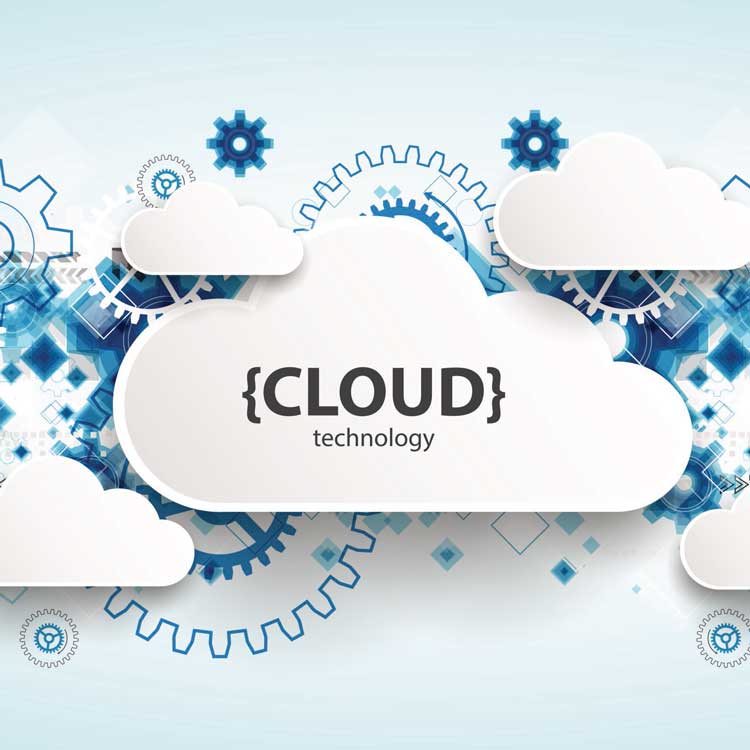Where applications and data run is critical for many reasons – optimal performance and regulatory requirements, for example – but increasingly businesses are using innovative tools to move and manage them across their own data centers, remote locations or multiple cloud services. They must learn how to use the right system and when to switch from a central data center, remote location or public cloud. In many cases, it means interconnecting hub to edge to cloud, which requires the ability to see and simply control across all of those different IT infrastructures.
Manufacturing, retail and other industries that are adopting a hybrid multicloud approach are learning how to combine centralized, distributed and edge computing.
HPE describes it as edge to cloud, where enterprise data isn’t confined to the data centers anymore. Data is also increasingly generated at the edge, processed and stored in the cloud, and used by an increasingly distributed global workforce.
Multicloud IT systems are now the norm in many enterprises. Over the past decade or so, these enterprises have modernized legacy IT infrastructures by moving to software-defined and private, public and hosted cloud services or deploying a hybrid IT architecture that enables agility, mobility of applications and data, availability, and rapid scaling on demand.
Along with cloud technology, there have been significant advances in the areas of AI, ML, IoT and data analytics. The way these technologies work necessitates powerful and varying amounts of compute, memory and storage at the node level, which often reside in geographically remote locations that aren’t well connected to the central data center or cloud or supported by onsite IT staff.
This is where edge computing comes in. For workloads that require data to be processed – in many cases, in real time – or stored at the same place where it’s generated, the edge holds an edge over the cloud (or gives the cloud an edge).
Red Had explains cloud computing as the act of running workloads within clouds, while edge computing is the act of running workloads on edge devices.
To understanding which one better than the other for particular needs, it helps to explore key differences and synergies between cloud and edge computing.
The Need for Edge Computing
There were 11 billion connected IoT devices worldwide at the end of 2021, according to a Statista study. This number is expected to reach 19 billion by 2025. Managing and processing the deluge of data these devices generate can be a nightmare if it has to be transmitted to the cloud first, given that much of the data stored in the cloud loses significance over time.
“Edge computing can apply to anything that involves placing service provisioning, data and intelligence closer to users and devices,” said Gordon Haff, Technology Evangelist at Red Hat.
Source: Knowledgehut
Basically, edge computing becomes a necessity when:
- The time lag in the whole process of data collection at the edge (remote location), transferring it to the central cloud for processing, sending the output back to the edge, and execution of the decision by the edge device is too high for the workload.
- The amount of data generated or processed is too much to send back and forth through the network connection.
- Certain data isn't worth transmitting because it’s value wanes quickly – i.e. in-store shopper traffic data use to target timely coupons may not be valuable after shoppers leave the store.
- Data needs to be processed at the same place it is collected or generated in order to comply with laws and regulations.
Edge Computing Use Cases
Some real world scenarios that edge computing is certainly better suited to than cloud computing are:
- Autonomous vehicles (AVs): A self-driving car needs to stop in a split second for a red light, pedestrian crossing or a stray moose on the road. It can’t afford to send data to the cloud and wait for instructions. Further, edge technology also helps the car make instant decisions (and also communicate with other AVs) based on weather conditions, traffic, detours and accidents in the area.
- Home automation: Home automation is driven by IoT. Smart home devices such as thermostats, refrigerators, smart speakers, light bulbs and so on are able to analyze the data they collect and make decisions. Sending all the data they collect to a cloud would clog up network bandwidth within no time, defeating their purpose.
- Security and surveillance: Edge technology can help make CCTVs, burglar alarms and the like “smarter” – the device can be programmed to identify unusual activity and potential threats and respond to them instantly by alerting users.
- Space imagery: The photos taken by satellites, space telescopes and space stations can be instantly analyzed by on-board edge devices that decide which images are worth transferring to the base (an expensive and resource-intensive process).
Advantages of Edge Computing over Cloud Computing
Global airwaves and cables are already stressed with the humongous amounts of data generated and streamed across the internet. In situations where data can’t be moved closer to the data center, the edge moves the data center itself.
“Things that require real-time performance are going to tend to be done at the edge,” said Adam Drobot, Board Chairman at OpenTechWorks, Inc.
“Edge computing will take its place in a spectrum of computing and communications technologies as another place where system architects can place computing workloads.”
The benefits of edge computing over the cloud and data centers include:
- Lower latency: The less data needs to travel, the faster it can be processed. Edge computing accelerates AI and ML models and enables AR and VR-related applications by processing input data instantaneously.
- Better accuracy: AI-based programs need a huge sampling size to deliver accurate learnings. In low-bandwidth cloud environments, the size of the dataset fed into the ML model is controlled or kept to a minimum level. However, this is not a concern at the edge – multiple models can run simultaneously along with data feedback loops to improve the accuracy of the model.
- Wider reach: Internet access is a basic requirement of the cloud model. The edge, however, can process data locally with containerized code even if there is no network connection. This extends the reach of critical business workloads to previously inaccessible remote locations while granting greater operational autonomy to these branches.
- Lesser cost: The edge saves network bandwidth costs by storing and processing data at remote and branch offices. This also complements the OPEX-focused pricing model of the cloud.
- Granular security: Sensitive or regulated data collected at the edge is stored at the same location or region. This allows organizations to comply better with governance, compliance or privacy regulations, implement “just right” physical and digital security policies and reduce exposure. More use of edge increases security demands because there are more things to manage and secure, and often local IT staff at edge locations is limited or working off-site.
Hybrid Cloud – The Best of Both Worlds
The edge by no means replaces the public or private cloud. Rather, it is a more efficient alternative to workloads and business cases that stretched the cloud’s abilities beyond its inherent strengths.
“A centralized utility for IT was never a realistic expectation,” said Haff.
“Even public clouds themselves have evolved to offer provider-specific differentiated services, rather than competing as commoditized utilities. But more generally, edge computing is a recognition that enterprise computing is heterogeneous and doesn’t lend itself to limited and simplistic patterns.”
Both are good depending on the use case, workload and business need, said Greg White, Nutanix senior director of product solutions marketing at Nutanix.
“Being able to do both without creating separate management, cost structure, and employee knowledge silos is important and valuable,” White said.
He said orgaizations should strive for an IT infrastructure that is flexible to easily leverage data center, cloud and edge.
“That way they can adapt without ripping out the plumbing every time there’s a new need,” said White.
Many enterprises as well as public cloud providers are looking into ways where they can deploy both edge and cloud selectively.
“I think it’s going to be very rare that an application will live only in edge computing,” said Dalia Adib, Director, Edge Computing Consulting at STL Partners.
“It’s going to need to communicate and interact with other workloads that are in the cloud or in an enterprise data center or on another device.”
Operations that can be executed faster and better at the end device can be assigned to the edge while applications that aggregate data from multiple sources and perform large-scale operations can stay in the cloud. The right combination of edge and cloud systems will help companies match their IT infrastructure to their business model, organizational structure, workflow and hierarchy.
Dipti Parmar is a marketing consultant and contributing writer to Nutanix. She’s a columnist for major tech and business publications such as IDG’s CIO.com, Adobe’s CMO.com, Entrepreneur Mag, and Inc. Follow Dipti on Twitter @dipTparmar or connect with her on LinkedIn for little specks of gold-dust-insights.
© 2022 Nutanix, Inc. All rights reserved. For additional legal information, please go here.






